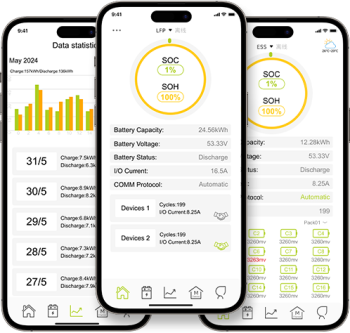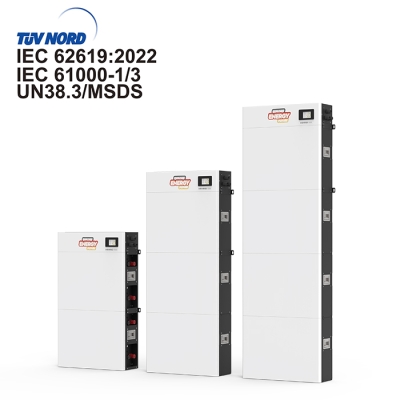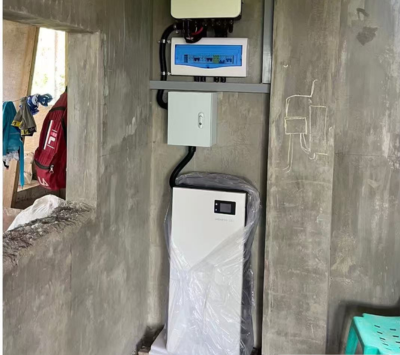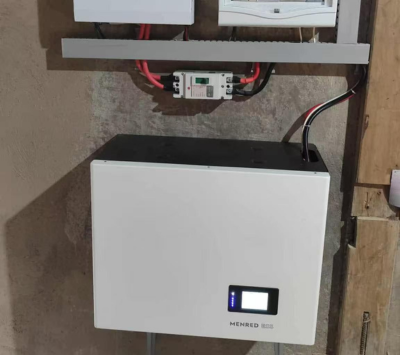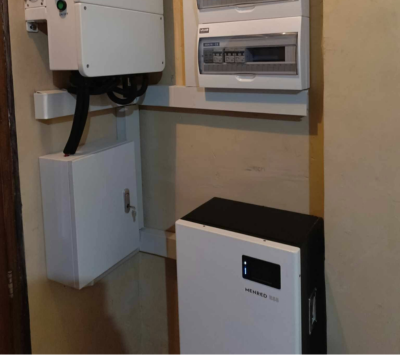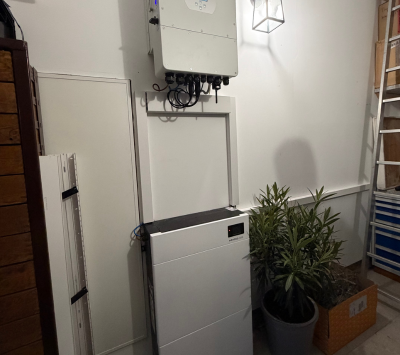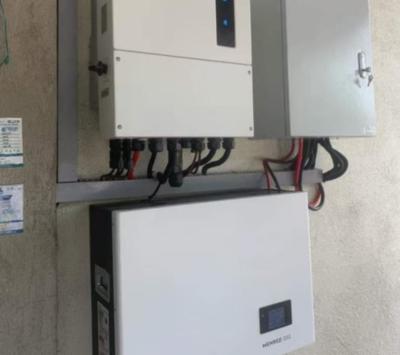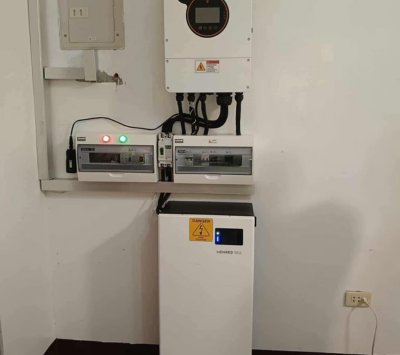Introduction: Evolution of Smart Lithium-Ion Batteries
Lithium-ion batteries have revolutionized portable energy storage, becoming essential in fields ranging from consumer electronics to transportation and renewable energy. As demand for high-capacity, stable, and safe batteries grows, smart lithium-ion batteries equipped with Battery Management Systems (BMS) have emerged to address key challenges in cell balancing, real-time monitoring, and thermal management. This guide explores the core components and technical mechanisms that make these smart batteries indispensable for high-performance applications.
Core Components and Technical Specifications of Smart Lithium-Ion Batteries
Smart lithium-ion batteries incorporate specialized components, each playing a critical role in the battery’s safety, longevity, and overall performance.
1. Lithium-Ion Cells
The lithium-ion cells themselves form the heart of the battery pack, and their specifications directly impact energy density, voltage stability, and safety. Common lithium-ion cell chemistries include:
- Lithium Iron Phosphate (LiFePO₄): Known for high thermal stability and safety, with an energy density around 100-140 Wh/kg and nominal voltage of 3.2V.
- Nickel Manganese Cobalt (NMC): Offers a higher energy density of up to 250-300 Wh/kg and a nominal voltage of 3.6-3.7V, widely used in electric vehicles and high-capacity applications.
These cells are typically connected in a series-parallel configuration (e.g., 4S2P for four cells in series and two in parallel) to reach the required capacity and voltage for the application. Series connections increase the voltage, while parallel connections enhance capacity.
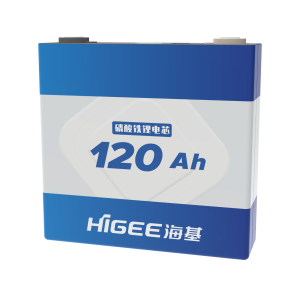
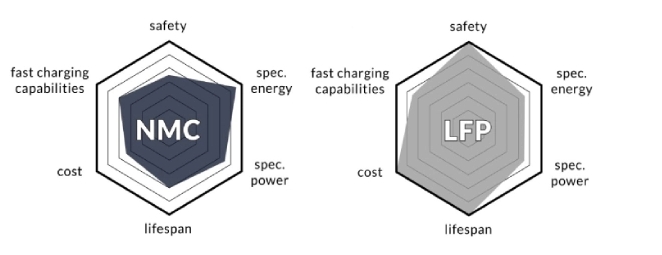
2. Battery Management System (BMS)
The BMS is the “brain” of the smart lithium-ion battery, responsible for monitoring, controlling, and protecting the battery at both the cell and pack level. Key BMS specifications include:
- Voltage Monitoring Accuracy: ±10 mV to ±20 mV per cell.
- Current Measurement Range: Typically 0-200A to handle high-power requirements in industrial and electric vehicle applications.
- Temperature Measurement: BMS temperature sensors monitor a range of -20°C to 60°C, critical for managing overheating and preventing thermal runaway.
The BMS also integrates cell balancing functions, which prevent discrepancies between cells by ensuring each cell charges to the same voltage. This balancing can be:
- Passive Balancing: Uses resistors to dissipate excess charge as heat, commonly used in lower-power applications.
- Active Balancing: Transfers energy from higher-voltage cells to lower-voltage cells, ideal for high-capacity systems like EVs.
3. Electrolyte Composition
The electrolyte serves as the medium for lithium-ion movement, crucial to energy storage and release. Electrolytes are often engineered to operate within a broad temperature range (e.g., -20°C to 60°C), ensuring efficient ion flow and minimizing degradation.
4. Protection Board
A critical safety component, the protection board isolates positive and negative electrodes, preventing short circuits and ensuring current flows only through controlled pathways. This layer enhances durability and minimizes risks of thermal runaway under high-load conditions.
Advanced BMS Functions for Safety and Performance
The Battery Management System (BMS) in smart lithium-ion batteries incorporates sophisticated functionalities for comprehensive control over battery health, safety, and efficiency.
Real-Time Monitoring and Data Collection
The BMS tracks cell voltage, current, temperature, and State of Charge (SOC) in real-time, transmitting data via CAN bus or RS485 protocols for remote monitoring and analysis. This constant monitoring helps prevent failures and identifies issues before they escalate, supporting applications where reliability is critical. Additionally, the BMS stores historical data, such as usage cycles, temperature variations, and fault records, to enable predictive maintenance.
Charging and Discharging Control
To maximize battery life, the BMS adjusts the charging and discharging process based on each cell’s State of Charge (SOC):
- Overcharge Protection: Limits voltage to a maximum threshold, typically 4.2V per cell.
- Over-Discharge Protection: Cuts off power when the cell voltage drops below 2.5V to prevent irreversible cell damage.
- Thermal Management: Controls current flow to limit overheating during discharge. For example, high-power applications might keep discharge temperatures below 45°C.
Fault Diagnosis and Safety Alerts
BMS fault detection involves real-time analysis of critical parameters:
- Voltage and Current Monitoring: Voltage is kept within ±10 mV across cells, and current is limited to safe levels, preventing circuit overload.
- Temperature Management: The BMS can deactivate sections of the battery if temperatures exceed 60°C, using integrated fan or liquid cooling systems to maintain safe operation.
When anomalies are detected, the BMS can activate alarms or shut down the battery, sending alerts to users through remote systems.
Active Cell Balancing for Efficiency
Cell balancing mitigates performance degradation by distributing charge across cells evenly. Passive balancing is used for smaller battery packs, dissipating excess charge as heat, while active balancing is more energy-efficient, ideal for high-capacity batteries in EVs and industrial applications.
Safety Features in Smart Lithium-Ion Batteries
Smart lithium-ion batteries integrate extensive safety mechanisms to prevent critical failures, making them suitable for a wide range of demanding applications.
1. Voltage and Current Protection
The BMS continuously monitors each cell’s voltage and current to prevent overcharge, over-discharge, and short circuits. For example, if current exceeds 120A, the system triggers circuit protection to avoid overheating and potential thermal runaway.
2. Thermal Management
Using precision temperature sensors, the BMS keeps cells within safe temperature ranges (typically 0°C to 45°C during operation). If cell temperature rises beyond 60°C, the BMS initiates shutdowns or activates cooling, such as fan-driven systems or liquid cooling for high-power setups.
3. Gas Leak Detection
Certain lithium-ion battery chemistries may release gases like hydrogen or carbon monoxide under stress. The BMS uses gas sensors to monitor these emissions, triggering alarms if gas levels exceed 50 ppm and engaging ventilation or system shutdown to prevent hazardous buildup.
4. Pressure Monitoring
To further prevent potential hazards, pressure sensors monitor changes that could signal internal short circuits or gas buildup. For instance, if internal pressure exceeds 100 kPa above ambient pressure, the BMS automatically triggers pressure relief valves or shuts down power.
5. Remote Fault Alerts and Data Transmission
Through CAN bus or RS485 communication, BMSs can alert users to faults in real-time, even offsite. Notifications may be issued if parameters like voltage surpass 4.3V or if temperatures exceed 60°C in high-power applications, enabling quick response to prevent damage.
Communication and Data Transmission in BMS Systems
Smart lithium-ion batteries support robust data exchange via multiple communication protocols, enabling integration into larger systems and enhancing operational control.
CAN Bus Communication
CAN (Controller Area Network) is an industry-standard protocol for data transfer across multiple nodes. With excellent real-time performance, CAN bus is ideal for battery systems needing constant updates on parameters like SOC, temperature, and voltage.
RS485 Communication for Long-Distance Transmission
RS485 communication supports longer-distance data transfer, connecting BMS modules to central systems in large installations. With strong interference resistance and long transmission distances, RS485 ensures data remains accurate across extensive battery systems.
Daisy Chain Communication
A daisy chain structure links multiple battery modules sequentially, allowing data to be gathered centrally while minimizing wiring and space requirements. This structure simplifies system design but is better suited for short- to medium-range connections due to latency concerns.
Remote Monitoring and Data Sharing
Through remote monitoring, users can access real-time battery information and receive alerts on any abnormalities. This feature enables efficient management and analysis for high-demand applications like EV fleets or industrial energy storage systems.
Data Monitoring and Historical Record Advantages
The BMS enables detailed monitoring and logging of key data, including charge cycles, temperature fluctuations, and fault events. Users can conveniently track and optimize battery performance over time through an app or PC, accessing real-time data on each cell’s voltage, current, and more.
1. Performance Optimization and Extended Battery Life
By analyzing historical data, users can adjust charging protocols to extend battery life. Historical trends also help in predicting the battery’s remaining life (State of Health, or SOH), allowing for timely maintenance or replacement.
2. Quick Fault Detection and Troubleshooting
BMS systems record anomalies in real-time, aiding in diagnosing and troubleshooting issues. For example, if cell temperature or voltage exceeds thresholds, the BMS logs the event, enabling quick problem identification and corrective actions.
3. Remote Monitoring and Precision Data Analysis
Remote data transmission provides ongoing insight into battery status, allowing for predictive maintenance and optimized energy output. This analysis is especially beneficial in renewable energy and high-demand industrial settings.
4. Enhanced Energy Efficiency
Historical data helps BMSs fine-tune energy consumption, minimizing waste and increasing energy efficiency. For applications requiring extended battery life, like electric vehicles or industrial storage systems, data analysis enhances long-term performance.
Applications of Smart Lithium-Ion Batteries
With advanced safety, monitoring, and energy management features, smart lithium-ion batteries are critical in various fields:
Consumer Electronics
Smart lithium-ion batteries are widely used in devices such as smartphones, tablets, and laptops, providing long-lasting power and advanced protection against overheating, overcharging, and over-discharge. These features contribute to the overall longevity of consumer devices, making them safer and more reliable for daily use.
Industrial Tools
Power tools like drills, saws, and other high-power equipment benefit from the high-power output and safety controls provided by smart lithium-ion batteries. The integrated Battery Management System (BMS) ensures steady power output, active balancing, and temperature control, enhancing tool performance and extending battery lifespan even in high-demand environments.
Drones and Robotics
Smart lithium-ion batteries are essential in drones, UAVs, and robotics, where high energy density and long-lasting power are critical. These batteries not only support prolonged flight time but also enable remote monitoring through real-time data on battery status, voltage, and current. This functionality is particularly valuable in applications where constant power monitoring is essential for both safety and operational success.
Electric Vehicles (EVs)
Electric vehicles rely heavily on smart lithium-ion batteries for their extended range and performance. With precise SOC (State of Charge) management, active cell balancing, and comprehensive fault detection, these batteries improve overall efficiency and longevity, supporting the growing demand for eco-friendly and efficient transportation.
Energy Storage for Renewable Power
Smart lithium-ion batteries play a crucial role in renewable energy storage systems, such as those used in solar and wind installations. These batteries enable efficient storage and controlled delivery of energy, helping manage fluctuating power supplies and promoting consistent, reliable energy availability. Through sophisticated BMS capabilities, stored energy is managed effectively, optimizing power output during peak demand.
Case Study: Smart Lithium-Ion Battery Pack Storage Installations
MENRED ESS’s smart lithium-ion battery pack solutions have been successfully implemented in numerous large-scale projects, demonstrating optimized performance, enhanced safety, and adaptability in real-world conditions. In one recent installation, our smart battery packs were deployed to support a solar energy storage system for a commercial facility. Each battery pack was equipped with an advanced Battery Management System (BMS) that allows for detailed, real-time monitoring of each cell’s voltage, current, and temperature. This monitoring can be accessed conveniently via both a mobile app and PC interface, ensuring proactive management of battery health and energy efficiency.



Key Benefits of Our Smart Lithium-Ion Battery Pack Solutions:
Real-Time Remote Monitoring: Gain comprehensive insights into each cell’s performance with live data on voltage, current, and temperature. This proactive monitoring ensures optimal battery health and efficiency over time, reducing downtime and enhancing the lifespan of the energy storage system.
Enhanced Safety: Our smart lithium-ion battery packs come with built-in protections against temperature extremes, over-voltage, and potential faults. This added layer of safety minimizes risks and ensures the battery packs deliver a reliable, long-lasting energy storage solution.
Scalability: Designed with flexibility in mind, our battery pack solutions support a wide range of energy requirements. From residential to commercial and industrial applications, our battery packs provide an adaptable and scalable solution, making them ideal for various energy storage applications, including solar and wind power storage.
This installation highlights how our smart lithium-ion battery packs provide a stable, efficient, and safe energy supply, supporting the adoption of renewable resources. Our solutions empower clients to meet their energy demands with ease, maximizing both efficiency and reliability.
Conclusion
Smart lithium-ion batteries, with integrated Battery Management Systems, deliver high performance, safety, and reliability. Their advanced control mechanisms and data management capabilities make them vital for applications where stability, efficiency, and long lifespan are critical. Whether for consumer electronics, EVs, or renewable energy, smart lithium-ion batteries continue to drive innovation in energy storage solutions.

